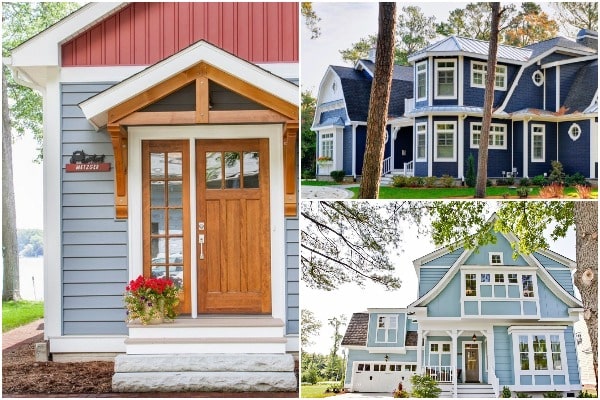The siding on your home serves multiple important functions. It not only enhances the aesthetic appeal of your house but also provides protection from the elements.
Over time, however, siding can deteriorate, leading to a range of problems, including reduced energy efficiency and water damage. Such problems have been occurring more recently in various parts of Texas. In most cases, it’s the extreme Texas weather and natural disasters that are causing this problem.
If you’re wondering whether it’s time to install new siding on your Texas home, here are some key signs to look for.

Visible Damage and Wear
One of the most obvious signs that it’s time to replace your home’s siding is visible damage and wear. As it ages, the siding tends to become more susceptible to various forms of damage, including cracks, holes, and dents.
Extreme weather conditions, such as heavy rain or high winds, can accelerate the deterioration process. Hail too can cause this type of exterior damage, something that has been happening a lot in Austin, Texas lately. That’s why many are opting for new siding installation in Austin and its nearby areas.
If you notice any of these issues, remember that it’s a clear indication that your siding is no longer effectively protecting your Texas home. Furthermore, extensive fading, chipping, or peeling paint can significantly diminish your home’s curb appeal, making it a perfect time for an upgrade.
When assessing the state of your siding, pay attention to the following indicators:
- Cracks and splits: Small cracks can lead to bigger problems if left unattended. They can allow moisture to penetrate your home’s structure, leading to mold and mildew growth.
- Holes and punctures: These can result from impacts, such as from flying debris or even pests like woodpeckers.
- Bubbling or blistering: This indicates moisture damage, and it’s a sign that your siding is no longer functioning as intended.
- Warping and sagging: These issues can be caused by excessive moisture, poor installation, or long-term wear and tear.
Certain natural events can lead to more catastrophic damage than others. For instance, in Corpus Christi, hurricanes have been found to do a lot of damage to houses. In such cases, siding repair is usually not an option. Siding contractors recommend opting for a full siding replacement.
That’s why, when it comes to heavily damaged siding in Corpus Christi and other parts of Texas, never try to repair it. Instead, always go for a full siding replacement.
According to Americraft Siding and Windows Inc., Texans usually opt for vinyl siding for protection against hail. Engineered hardwood siding can provide protection against mold. However, this type of hardwood siding is susceptible to water and moisture damage. Hence, only opt for engineered hardwood if you’re living in an area with less rainfall.
Rising Energy Bills
According to Bloomberg, energy bills are up all around the world. Your energy bills are also, probably, quite high. However, if you’ve noticed any additional or unusual increase in your energy bills recently, you might want to check your home’s siding.
Old or damaged siding can compromise your home’s insulation, allowing outdoor air to seep in and conditioned air to escape. This can result in higher energy consumption as your HVAC system works harder to maintain a comfortable indoor temperature. In the long run, these increased energy costs can add up significantly.
Consider conducting an energy audit or consulting with a professional to determine if your siding is affecting your home’s energy efficiency. Investing in new, energy-efficient siding can help reduce your energy bills and make your home more comfortable year-round.
San Antonio locals have been struggling with rising energy bills for a while now. These bills are higher in some seasons than others. However, not many think about new siding installation when they see abrupt increases in their energy bills. Who knows, perhaps because of their damaged siding, San Antonio locals are having to pay high energy bills.
Also Read: Solar Energy 101: Your Guide to Sustainable Power
Rotting or Decay
According to Forbes, wood siding, in particular, is prone to rot and decay over time. This is especially true if it’s not adequately maintained or if it’s been exposed to moisture for extended periods.
Signs of rotting or decay include soft spots, discoloration, and a musty odor. As reported by BUILD Magazine, siding not only affects your home’s appearance but also its structural integrity. If you’re not aware that the siding is what needs to be fixed, you might never be able to solve this problem.
Hence, it’s crucial to keep an eye out for rotting siding. When spotted, replace the rotted sections promptly to prevent further damage.
Warping and Buckling
Siding that is warped or buckled is not only unsightly but also ineffective at protecting your home. Warping and buckling can be caused by various factors, including temperature fluctuations and moisture infiltration. These issues can create gaps in your siding, allowing water and pests to enter your home.
If you notice areas of your siding that are no longer flush with the wall, it’s a clear indication that replacement is needed.
Conclusion
As you can tell from this discussion, there are plenty of signs that inculcate it’s time to replace your Texas home siding. As long as you can keep an eye out for these signs, you can take prompt action to replace your home siding. In doing so, you’ll be able to maintain the structural integrity of your Texas home without the home incurring too much damage.